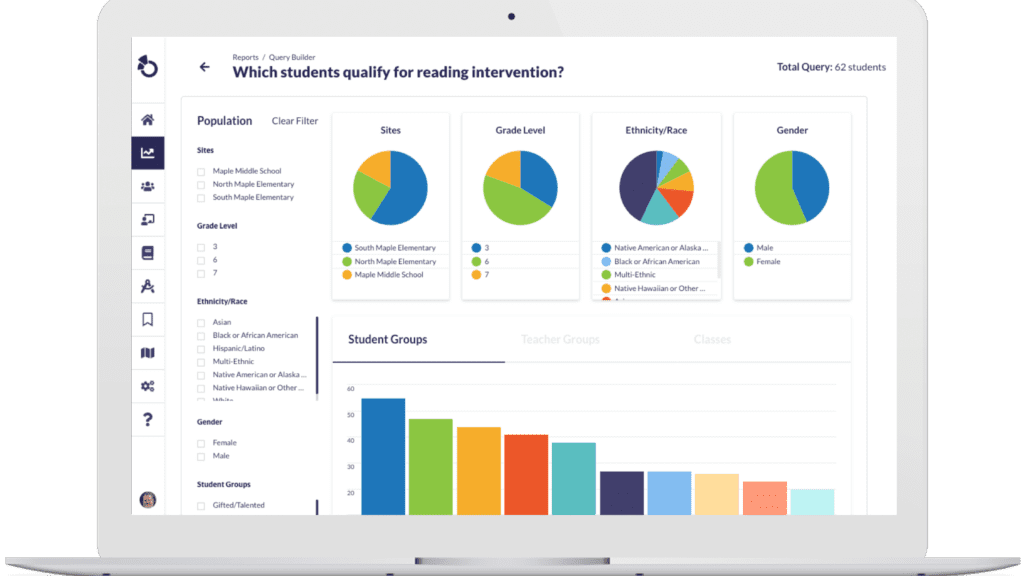How District Leaders Align Curriculum, Assessment, and Instruction for Student Success
By: David Specht
Looking for actionable strategies to support student success in your school or district? In this engaging roundtable, district leaders and education experts shared practical ways to align curriculum, assessment, and instruction to better meet the needs of all learners. Whether you’re a district leader, administrator, or educator, this session is packed with ideas to bring back to your team.
Here’s what was covered:
- Designing an Inclusive Curriculum: How to prioritize and align essential standards to create a curriculum that supports all learners.
- Aligning Assessment Practices: Ways to help educators set clear learning targets and use balanced assessments to gather meaningful data.
- Empowering Collaborative Instruction: How structured PLCs drive collaboration, improve instruction, and foster data-informed decision-making.
Our expert panelists also answered questions from attendees, sharing real-world strategies for overcoming challenges and achieving success.
Ready to dive in and gain new insights? Watch the full session now:
Three Key Ways K-12 Leaders Are Aligning Curriculum, Assessment, and Instruction for Student Success
Design a Clear, Local Curriculum First
Developing a curriculum that truly serves your students isn’t about racing to cover every standard—it’s about being strategic, collaborative, and patient. Start by prioritizing the most essential standards, then build consensus around what mastery actually looks like. Many schools have found success using the Curriculum Leadership Institute (CLI) Model, a comprehensive process designed to create lasting systems for curriculum, instruction, and assessment within districts.
“We really had to have a mindset shift within our staff and our administration at the time, that the curriculum is what you teach as far as what skills you're wanting your students to be able to know and do, what those outcomes and components are…breaking down what they felt was really important to pull out, what was relevant to the students in those classrooms, and curriculum mapping that, and having a scope and sequence so that those students are always going to get what their typical peers are getting, that exposure in that time.”
Dr. Kristin Kopta
Superintendent
,
Pennoyer School District 79
By visually mapping out curriculum topics, leaders can easily identify gaps and overlaps, ensuring that every student receives a comprehensive and cohesive education. This collaborative approach not only fosters a shared understanding among educators but also builds a unified vision for student success.
Align Assessments to Prioritized Standards
Once your curriculum is clearly defined, aligning assessments to those priorities ensures that the data collected is meaningful and actionable. It’s not just about measuring student performance, but about informing instruction and supporting growth.
“We know our students are at all different places of the learning, and we know that if we've done a great job of prioritizing our learning outcomes, that we can set a pacing guide that's reasonable within the 13 years that we have them to actually be able to make sure that the learning endures and that we to set up a pacing system that would actually allow us to intervene and even enrich and go deeper in that we've chosen outcomes that actually leverage into learning other standards within our state or within a national set of standards.”
Dr. Chad Lang
Assistant Superintendent of School Improvement
,
Glenwood Community School District
Aligned assessments provide reliable data that help educators identify learning gaps, adjust instruction, and celebrate student progress, fostering a more responsive teaching environment. Dr. Lang emphasizes the necessity of aligning assessment rigor with learning outcomes, ensuring that data gathered truly reflects student understanding and guides effective instruction.
Empower Collaborative Instruction Through PLCs
Professional Learning Communities (PLCs) are the heartbeat of effective instructional practices. Structured PLCs provide teachers with dedicated time to collaborate, analyze student data, and refine instructional strategies, creating a culture of continuous improvement.
“Our teachers have the opportunity every day to plan together and work together, and that has been a game changer… Once a week… we look at student data [to] make decisions and change what we're doing.”
Jodi Fierstein
Elementary Principal & Special Education Director
,
Superior Public Schools
By embedding collaboration into the daily routine, PLCs become powerful mechanisms for sharing best practices and addressing student needs collectively. This collaborative environment not only enhances instructional quality but also ensures that all teachers are aligned with the district’s educational goals, ultimately leading to improved student outcomes.
Request a demo!
See exactly how Otus can help your school accelerate student growth and improve student outcomes – all while saving educators time.




